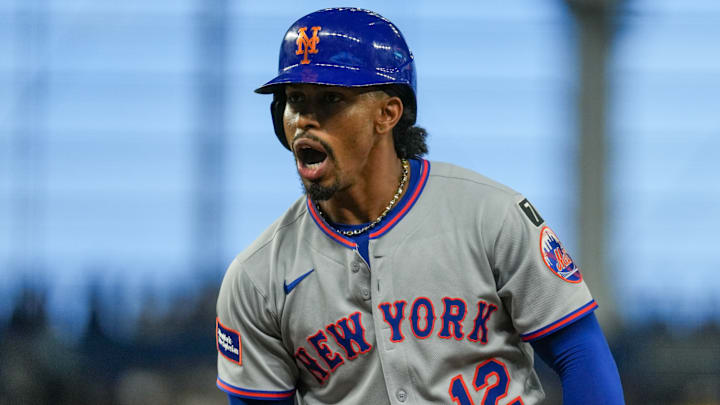If the New York Mets really are going to roll into 2026 without a clear defensive solution at third base, Francisco Lindor just inherited a very specific offseason assignment. The face of the franchise can’t control who the Mets plug in at the hot corner, but he can tighten up the one part of his own defensive profile that suddenly looks like a leak: his ability to move to his right.
For almost a decade, Lindor’s glove has been the safety net that made roster flaws easier to live with. Now, with third base unsettled and the left side of the infield under the microscope, that safety net needs some repair work.
Mets can’t ignore Francisco Lindor’s surprising defensive decline to his right
This isn’t a referendum on Lindor’s overall value or some claim that he’s suddenly become a bad defender. It’s about a glaring directional split that Statcast has made impossible to ignore. Outs Above Average breaks defense down by direction, and from 2024 to 2025 Lindor went from one of the position’s best shortstops at making plays to his right (17) to one of the worst (-5) in MLB at that very specific movement pattern. When you pair that with ongoing questions about who’s going to be trusted at third, the Mets simply don’t have the margin for error to live with a shortstop whose weakest movement happens to be toward a problem spot.
So the clear goal for Lindor is simple to state, harder to execute: reclaim his range and fluidity to his right. That means sharpening the first step, getting back to beating balls to the spot in the 5–6 hole, and turning more of those borderline plays into routine outs again. In 2024, the metrics backed up what the eye test said — Lindor was a stabilizing presence who erased mistakes and made the left side feel smaller to opposing hitters. By 2025, those same directional numbers show a dramatic drop.
The context is what makes this so urgent for the Mets. Third base has been a revolving door of “maybe he hits enough” and “maybe the glove comes around” options. That’s survivable if the shortstop is erasing ground balls in the seam and bailing out a below-average defender next to him. It’s a lot harder to live with if the third baseman is shaky and Lindor’s not getting to the same balls in that direction.
The good news is, this is exactly the kind of fix that feels realistic for a player with Lindor’s track record and baseball IQ. This isn’t a 37-year-old whose legs have clearly gone; it’s a 32-year-old whose directional metrics dipped in one specific lane. With a normal, healthy winter, he and the Mets’ staff can attack it from multiple angles: pre-pitch positioning that puts him a half-step closer to the 5–6 hole in certain counts, work on his crossover step and first move, and making sure the internal clock matches the range he still has rather than the range he used to have. Even a modest bounce-back toward league average on balls to his right would change the math for the team.
If the Mets front office doesn’t land a clear defensive upgrade at third, this becomes one of the quiet swing points of their entire season. Lindor doesn’t need to win another Platinum Glove for the Mets to contend, but he does need to turn that directional split from a liability back into at least a neutral, ideally a strength.
